Series parallel measurement
Instructions:
This activity has three sections:
- measure voltage
- measure current flow
- measure resistance.
Note:
- You can print this page and write your answers onto it.
Series parallel circuit diagram
Instructions:
- Look at the circuit diagram.
- Observe voltage and resistance values.
Review the circuit diagram for future reference.
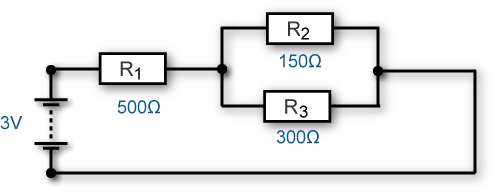
Section 1 – Measure voltage
Instructions:
You'll be shown a connected series parallel circuit. You'll need to:
- answer questions about meter connection
- answer questions about voltage readings
- circle or write down your answer.
1. Select the meter reading you'd expect for this voltage test.
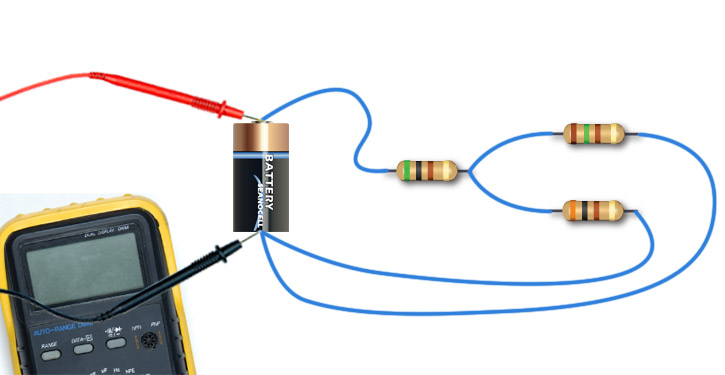
- 0.12 mV
- 3 KV
- 3.33 mA
- 3 V
- 12 V
- 6 V
- -3 V
2. Select the meter reading you'd expect for this voltage test.
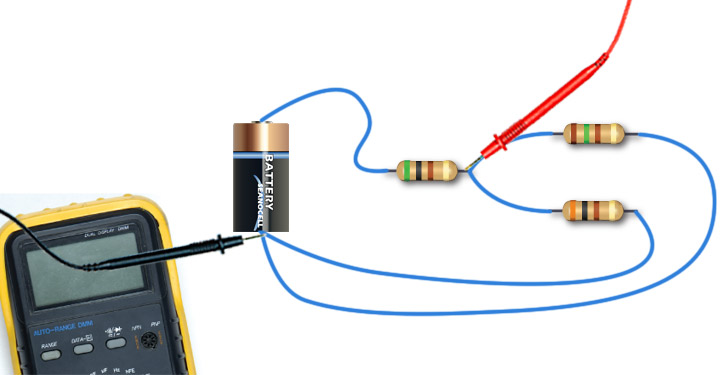
- 0.12 mV
- 2.5 V
- 0.5 V
- 3 V
- 12 V
- 6 V
- -3 V
3. Select the meter reading you'd expect for this voltage test.
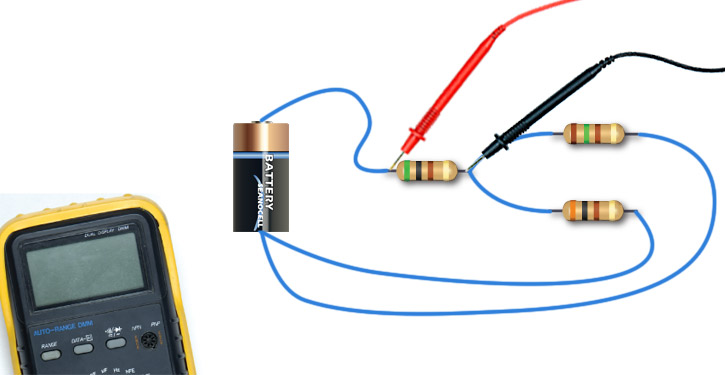
- 0.12 mV
- 2.5 V
- 0.5 V
- 3 V
- 12 V
- 6 V
- -3 V
4. What would voltage measurements across the resistors determine?
- Voltage is the same across all resistors in series parallel.
- Voltage is highest at the largest resistance.
- Voltage is lowest at the largest resistance.
Section 2 – Measure amperage
Instructions:
You'll be shown a connected series parallel circuit. You'll need to:
- answer questions, about using an ammeter
- answer questions, about measuring amps at specific points in the circuit
- circle or write down your answer.
5. If a 600 ohm resistor is connected to a three volt power supply, what range would you expect the amps to be?
- 0 to 5 amps.
- 0 to 10 milliamps.
- 10 to 20 amps.
- 0 to 10 amps.
6. Will this connection measure total current flow through three resistors?
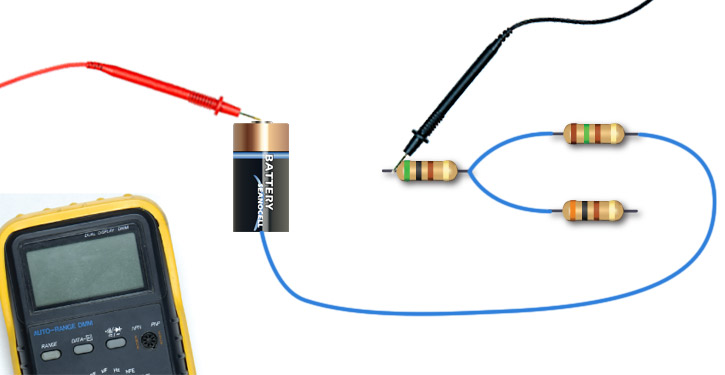
- Yes
- No
7. Select the meter reading you'd expect for this current test.

- 3.33 mA
- 5.0 mA
- 1.8 A
- 1.66 mA
- 1.2 A
- 0.6 A
- 0.02 mA
8. Select the meter reading you'd expect for this current test.

- 3.33 mA
- 5.0 mA
- 1.8 A
- 1.66 mA
- 1.2 A
- 0.6 A
- 0.02 mA
Section 3 – Measure resistance
Instructions:
You'll be shown a connected series parallel circuit. You'll need to:
- answer questions about meter connection
- answer questions about measuring resistance at specific points in the circuit
- circle or write down your answer.
9. Is this connection correct for total resistance?
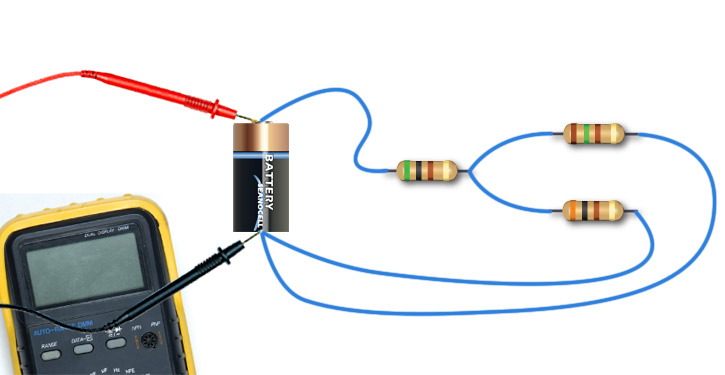
- Yes
- No
10. Select the meter reading you'd expect for this resistance test.
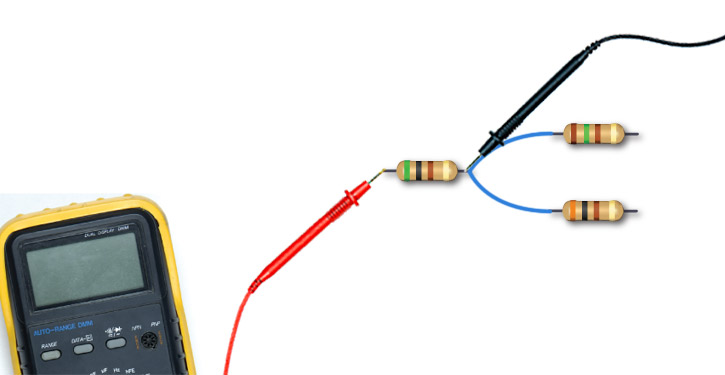
- 100 Ω
- 600 Ω
- 20 Ω
- 6 mΩ
- 60 Ω
- 800 Ω
- 150 Ω
- 500 Ω
- 950 Ω
- 300 Ω
11. Select the meter reading you'd expect for this resistance test.
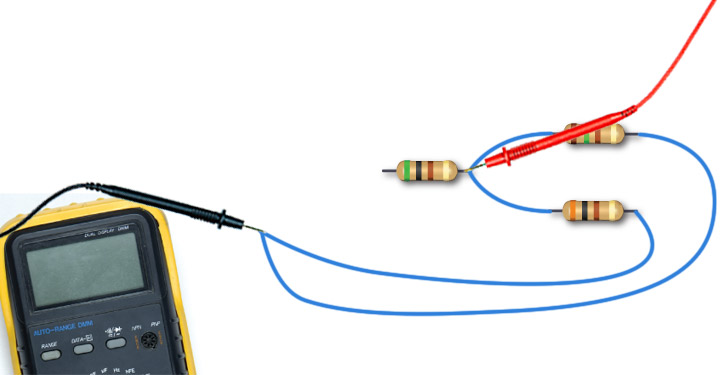
- 100 Ω
- 600 Ω
- 20 Ω
- 6 mΩ
- 60 Ω
- 800 Ω
- 150 Ω
- 500 Ω
- 950 Ω
- 300 Ω
12. Select the meter reading you'd expect for this resistance test.
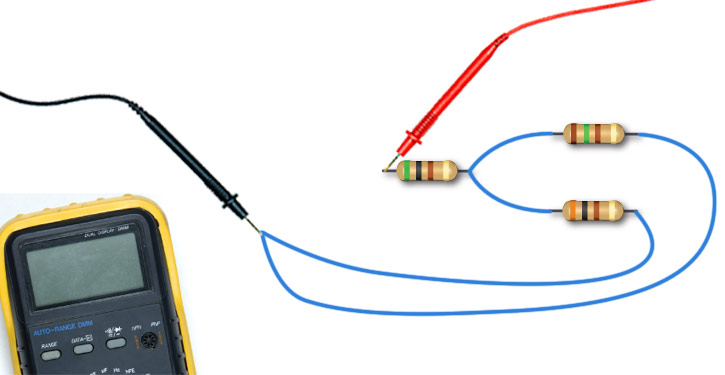
- 100 Ω
- 600 Ω
- 20 Ω
- 6 mΩ
- 60 Ω
- 800 Ω
- 150 Ω
- 500 Ω
- 950 Ω
- 300 Ω
13. Select the meter reading you'd expect for this resistance test.
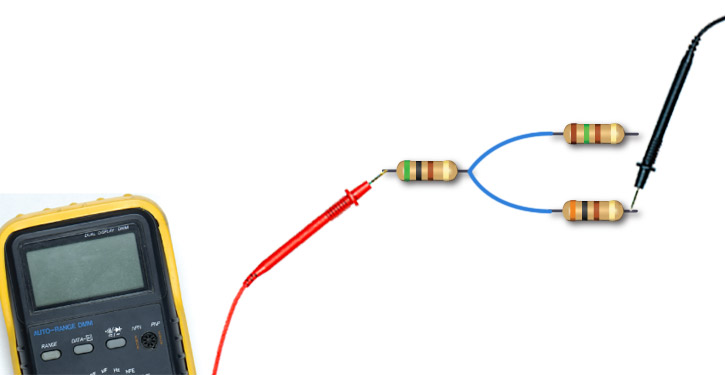
- 100 Ω
- 600 Ω
- 20 Ω
- 6 mΩ
- 60 Ω
- 800 Ω
- 150 Ω
- 500 Ω
- 950 Ω
- 300 Ω
14. What did you notice about the total resistance value?
- It equalled sum of series resistance and parallel section.
- It was equal to the sum of all of the individual resistances.
- It was lower than any individual resistance in the circuit.
When you have finished:
- show your answers to your trainer
- close this window and choose a new activity from the menu.